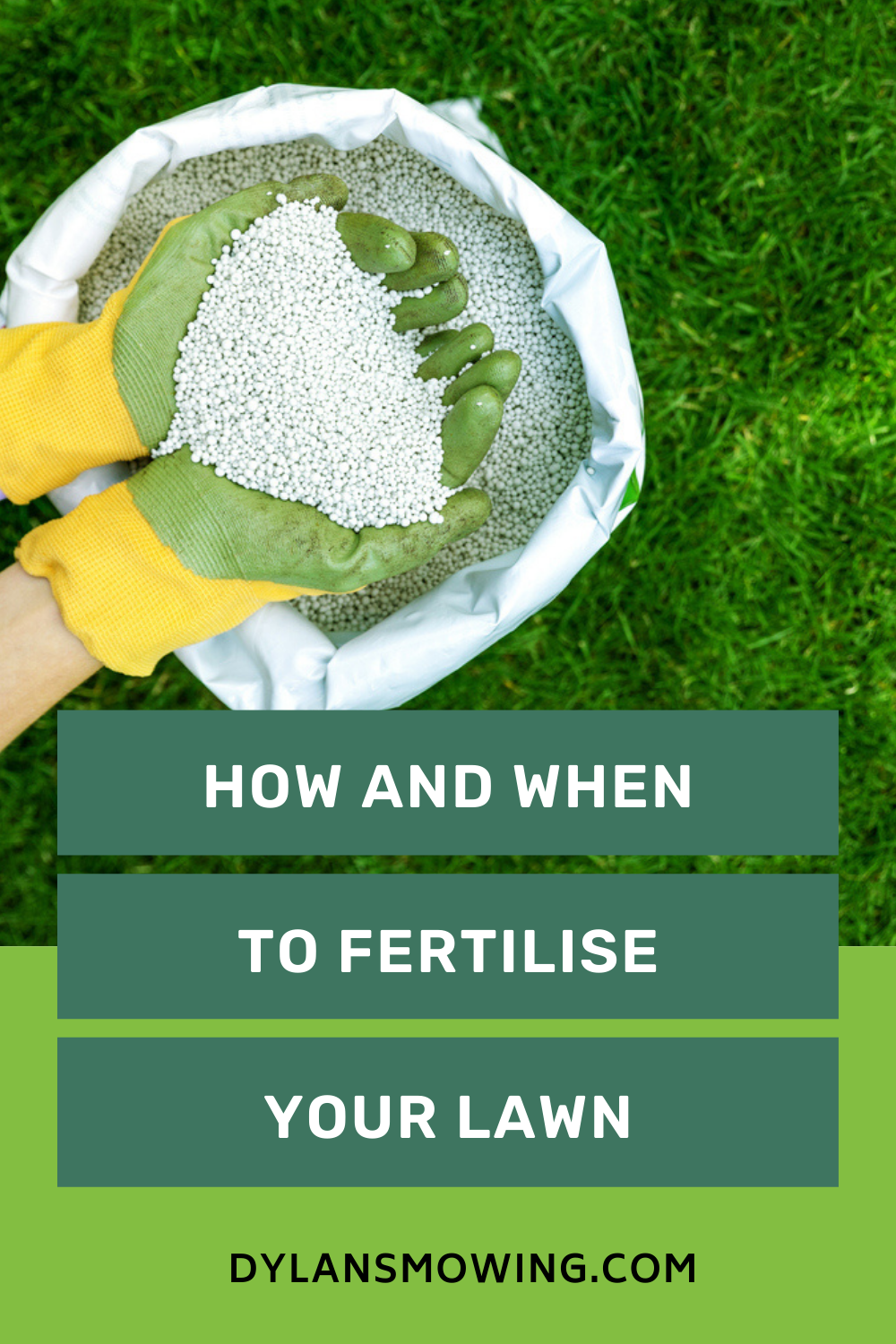Fertilising your lawn is an important part of maintaining a healthy lawn. This can be a few times a year, but the recommended amount would be once in Autumn, and once in Spring.
Fertilising in Autumn can help to protect your lawn during the colder months of Winter, while fertilising in Spring will help to promote growth and get your lawn through the hot summer months. When buying lawn fertiliser, it’s always best to check what type of grass you have – there are different fertiliser products for different types of grass.
Follow this simple guide so you know which essential nutrients you’ll need to provide to your lawn.

Know Your Soil pH
It’s chemistry time! Don’t worry. We promise there won’t be a test. Knowing your lawn soil pH, however, will greatly help you to understand what your lawn needs. Soil pH acidity and alkalinity is measured on a scale of 0-14. 0 – 7 is acidic, 7 is neutral, and 7 – 14 is alkaline. Lawns like a nice neutral area on this scale, so you won’t you pH levels to be around 6.5 to 7. So let’s get testing! Soil testing kits are readily available at your favourite gardening store and are pretty easy to follow. They may even test the soil from a sample for you! Make sure to test a few areas of your lawn. Knowing where your lawn is on the pH scale will help to determine what kind of fertiliser you need.
The Nutrients Inside Your Soil
Three main nutrients are found in your lawn – Nitrogen, Phosphorous and Potassium. Nitrogen usually makes up the highest percentage found in fertilisers. If you find that your grass is yellowing in areas, it most likely will be cause by Nitrogen deficiency. Nitrogen improves your grass leaves, which helps to make your lawn look greener, thicker, and healthier. Potassium helps to protect your grass and withstand extreme conditions such as frost or damaging summer heat. Phosphorous is usually the least percentage in this trio and helps to maintain healthy grass roots. Once you have a pH test, you will have a better idea of what’s going on inside your lawn and soil
Don’t Forget To Prep
Before applying fertiliser to your lawn, make sure to rake and remove any debris from your lawn. If you have just mown your lawn, wait a couple of days before fertilising. It’s also a great idea to check with your local garden centre on what type of lawn you have and what your soil pH level is – this will help to determine what type of fertiliser you need to use.
What’s Your Type?
Fertilisers come in different forms and have different applications for your lawn. Lets have a look into the different types and which ones will be best suited to you.
Liquid fertilisers
Liquid fertilisers can be applied to both the soil and to the grass foliage, which is called “foliar application”. A huge benefit in using this type of fertiliser is that it can be administered to huge lawns using a spray bottle attachment on your garden hose. It will also ensure you give your lawn a uniform fertiliser application, and you can also blend in other products in to the liquid solution.
Granular fertilisers
Granular fertilisers are usually found in pellet form and are considered a dry fertiliser. The benefit to granular fertilisers is that the ratio of Nitrogen, Phosphorous and Potassium can be mixed and controlled – this can be important especially when identifying a particular deficiency in your lawn. The key benefits to granular fertilisers are that they are slow release, which means they can continue to feed your lawn over a longer time. It will also provide a consistent level of growth and prevent any nutrient run-off.
Organic fertilisers
Organic fertilisers tend to focus on the health of the soil, usually providing microorganisms that will work to keep the soil free of toxic imbalances and improve pH levels. This organic lawn food usually features natural ingredients such as fish, seaweed, manure, and bio-stimulants.
Applying fertilisers at the right time of the year is important to ensure your lawn is keep happy and healthy. If you only want to feed your lawn once a year, Spring is the best time to do it. Check with your local garden centre as to what type of fertiliser is best for your lawn. And of course, when in doubt, just contact us and we will be happy to lend you a helping hand.






